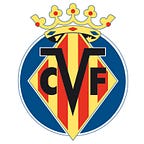The Estadio de la Cerámica: Home of Villarreal CF
Almost 100 years ago on 17th June 1923 the ‘Campo del Villarreal’ was inaugurated by José Calduch. The first game in this stadium was CD Castellón against Deportivo Cervantes, two teams from the Castellón province. It was soon the home of Villarreal CF. Two years later, the stadium’s name changed to the ‘El Madrigal’, which was the name of the rural site on which the ground, which now holds 23,500 fans, was built.
In the 50s the club achieved its first promotion to the Third Division and with it came the first remodelling of El Madrigal. In 1952, the pitch was enlarged from 95x50m to 104x65m and another big extension was added on the 75th anniversary of the club in 1998. The occasion was used to carry out one of the most significant remodellings of the stadium, the results of which gave us the latest version of El Madrigal. The project was completed for the 1999/00 season.
In 1997, Fernando Roig, new club president, came to Villarreal CF. The club was first promoted to the Second Division in the 70s, but had never gone higher and Roig took the club to the First Division after only one year.
Villarreal became the first club in Spain to install a mixed artificial and natural grass pitch. This is a hybrid grass system in which synthetic fibres are injected into the soil allowing the roots of the natural grass to curl around and root the artificial fibres, providing a more stable and longstanding field of play.
The stadium’s biggest renovation was in 2017. On 8th January 2017, Villarreal unveiled the new name of its stadium, the “Estadio de la Cerámica” (Ceramic Stadium), as a symbol that identifies and is representative of the province of Castellón, proudly becoming an ambassador for one of the best products the region produces as well as a showcase of this extraordinary material. But not only the name changed. The surroundings have also been transformed, as a new, airy square has been built, with ceramic pavements. From the square, people have a fantastic view of the stadium’s new façade and it also serves as a meeting point and space for activities for all fans gearing up for matches.
The first match in the renewed stadium was Villarreal CF against FC Barcelona, which ended in a draw (1–1). It was a momentous occasion well before kick-off though. The stadium’s new name was revealed in a spectacular presentation in the form of a light show projected onto the brand-new, ceramic façade. The historical and truly moving video that lit up the square before thousands of Yellows fans will go down as one of the most significant moments in the club’s history. You can see the full presentation in the video below (subtitles available).
The Estadio de la Cerámica, where dreams have, are, and will come true.
